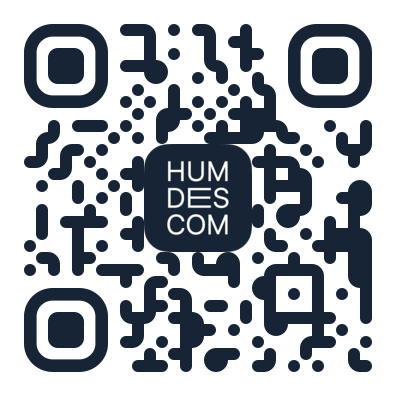Profiles in Human Design: The Key to Understanding Compatibility
Every relationship is a unique interaction of two energies. In Human Design mechanics, a profile defines the role we play in life and how we connect with others. Understanding your own Human Design profile and that of your partner helps identify strengths, predict potential challenges, and find balance in relationships.
Profiles are a core part of the Human Design chart, shaped by personality lines and body lines. However, a profile alone doesn’t determine relationship dynamics — channels and centers also play a crucial role.
The Six Personality Lines and Their Impact on Relationships
Before exploring profiles, it’s essential to understand the six personality lines, which define different relationship strategies:
- 1st Line (Investigator): Seeks stability, needing deep understanding before fully committing.
- 2nd Line (Hermit): Needs solitude but naturally attracts others through effortless magnetism.
- 3rd Line (Martyr): Learns through trial and error, gaining wisdom through experience.
- 4th Line (Opportunist): Builds long-term bonds, values social stability and mutual support.
- 5th Line (Heretic): Carries projections from others, often seen as a problem-solver but needs clear boundaries.
- 6th Line (Role Model): Moves through three life phases—experimentation, observation, and wisdom.
Each personality profile combines two of these personality lines, forming unique strategy and authority dynamics in relationships.
Overview of the 12 Profiles and Their Role in Compatibility
1/3 – Investigator-Martyr
Deeply analyzes relationships, values security, but may face disappointments if expectations aren’t met. Learns through trial and error, which can bring instability but also profound understanding of the partner.
1/4 – Investigator-Opportunist
Studies their partner thoroughly before opening up. Once trust is built, they form strong, stable bonds. Struggles with breakups, as they dislike abrupt changes.
2/4 – Hermit-Opportunist
Balances solitude with social interaction. Needs recognition and support in relationships but may withdraw suddenly if the connection feels off.
2/5 – Hermit-Heretic
Attracts partners with an air of mystery but often faces unrealistic expectations. Must establish clear boundaries to avoid external pressures.
3/5 – Martyr-Heretic
Explores relationships through experimentation, often surprising partners with unconventional views. Needs a partner who accepts their dynamic nature.
3/6 – Martyr-Role Model
Begins with chaotic experiences but later transitions into wisdom. Requires a partner who embraces their evolving nature.
4/1 – Opportunist-Investigator
Seeks strong social foundations and stable bonds. Finds breakups challenging, as they resist changing their social environment.
4/6 – Opportunist-Role Model
Initially makes impulsive relationship choices but later becomes more selective. Needs honesty and recognition from their partner.
5/1 – Heretic-Investigator
Draws attention but struggles with external projections. Needs personal space and open communication.
5/2 – Heretic-Hermit
Has natural charisma but dislikes excessive attention. Often perceived as a savior, but values independence.
6/2 – Role Model-Hermit
Moves through chaotic phases, later becoming a source of wisdom. Needs a patient partner who supports their transformations.
6/3 – Role Model-Martyr
Seeks personal growth through experience and transformation. Gains stability with age but needs a flexible partner.
Connection Themes in Human Design
Resonant Connection
These relationships feel effortless because both partners share a profile element, fostering mutual understanding.
Resonant Profiles:
1/3 – 1/4, 2/4 – 2/5, 3/5 – 3/6, 4/1 – 4/6, 5/1 – 5/2, 6/2 – 6/3.
Harmonious Connection
Partners balance each other’s strengths, creating complementarity. These relationships require adjustment but can be deeply rewarding.
Harmonious Profiles:
1/3 – 3/5, 2/4 – 4/6, 5/1 – 1/4, 6/2 – 2/5.
Dissonant Connection
These relationships can be challenging due to fundamental differences. However, they can lead to growth if approached consciously.
Dissonant Profiles:
1/3 – 6/2, 2/5 – 5/1, 3/6 – 4/1.
These relationship patterns are part of connection themes, helping analyze relational dynamics.
Profiles and Relationship Foundations: Flexibility Over Predetermination
Although Human Design profiles and personality lines provide valuable insights into relationships, they don’t dictate their success or failure. Compatibility depends on multiple factors, including strategy and authority, self-awareness, communication, and willingness to adapt. A harmonious connection isn’t a guarantee of an easy relationship, just as a dissonant connection doesn’t mean inevitable struggle. Instead, these relationship foundations serve as a guide, helping partners recognize their strengths and navigate challenges through conscious effort and emotional intelligence.
A profile in Human Design is a powerful tool for understanding relationship dynamics. By learning about your Human Design profile and that of your partner, you can build more fulfilling and balanced relationships.
Want to explore your compatibility? Generate your free Human Design chart at humdes.com and unlock the secrets of relationships today!
